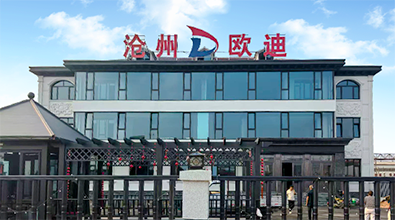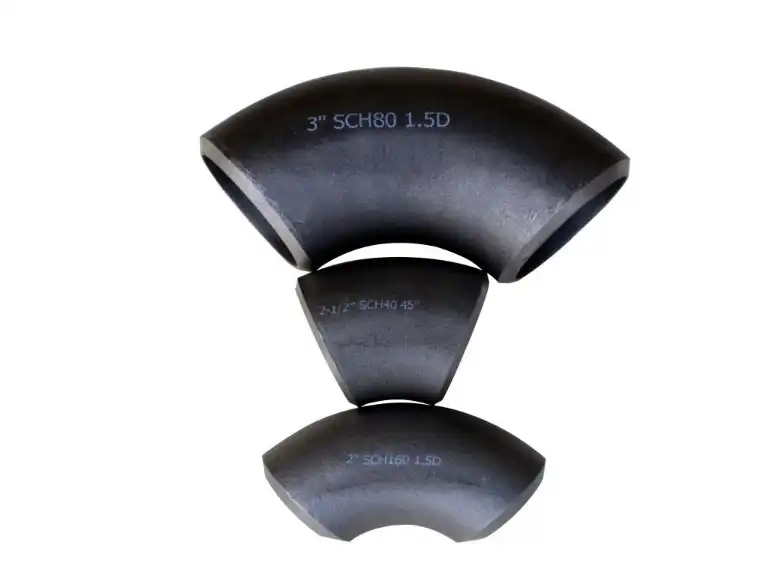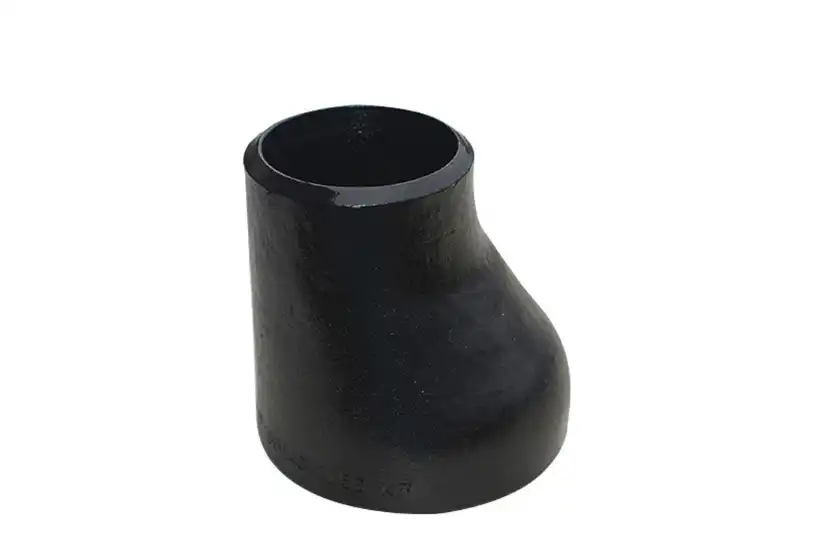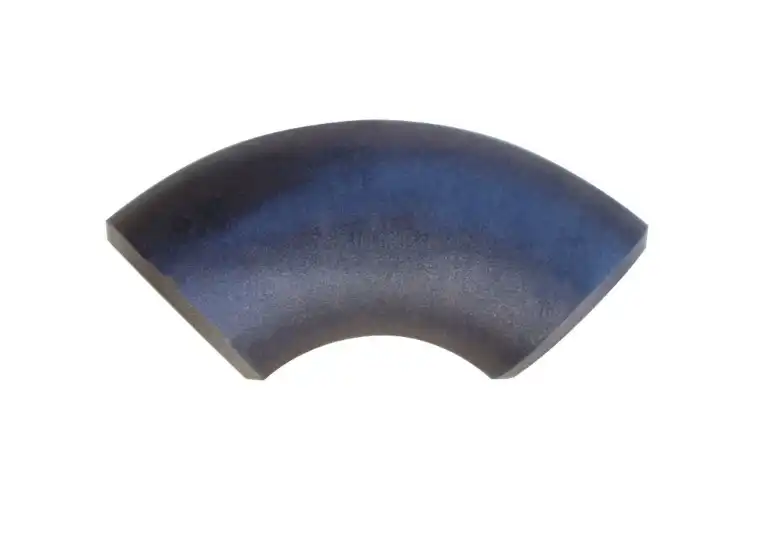Carbon Steel Elbows: Meeting ASME B16.9 Standards
Carbon steel elbows are crucial components in various piping systems, serving as essential connectors that facilitate changes in direction within pipelines. These fittings play a vital role in maintaining the integrity and efficiency of piping networks across numerous industries. To ensure consistency, reliability, and safety in their design and manufacture, carbon steel elbows must adhere to rigorous standards, with ASME B16.9 being one of the most widely recognized and respected. This comprehensive standard, developed by the American Society of Mechanical Engineers, outlines specific requirements for the dimensions, tolerances, and material properties of butt-welding fittings, including carbon steel elbows. By conforming to ASME B16.9 standards, manufacturers can produce high-quality elbows that meet the demanding needs of modern industrial applications while ensuring compatibility and interchangeability across different piping systems.

What Are the Key Requirements for a Carbon Steel Elbow Under ASME B16.9?
Material Composition and Properties
Carbon steel elbows meeting ASME B16.9 standards must adhere to strict material composition requirements. The standard typically specifies the use of ASTM A234 WPB grade carbon steel, which offers an optimal balance of strength, ductility, and weldability. This material composition ensures that the carbon steel elbow can withstand the various stresses and pressures encountered in piping systems. The chemical composition of the steel must be carefully controlled to maintain consistent properties throughout the elbow. Additionally, the mechanical properties of the carbon steel elbow, such as tensile strength, yield strength, and elongation, must meet or exceed the minimum values specified in the standard to ensure reliable performance under various operating conditions.
Dimensional Tolerances and Specifications
ASME B16.9 outlines precise dimensional requirements for carbon steel elbows, including wall thickness, outside diameter, and center-to-end dimensions. These specifications are critical for ensuring proper fit and alignment within piping systems. The standard typically allows for a certain degree of tolerance in these dimensions to account for manufacturing variations. For instance, the wall thickness of a carbon steel elbow may have a tolerance of ±12.5% of the nominal thickness. The outside diameter and out-of-roundness tolerances are also specified to ensure compatibility with mating components. Adhering to these dimensional requirements is crucial for maintaining the integrity of the piping system and preventing potential leaks or failures at connection points.
Surface Finish and Quality Control
The surface finish of carbon steel elbows is an important consideration under ASME B16.9. The standard requires that the surface be free from defects that could compromise the integrity of the fitting or interfere with its intended use. This includes requirements for smoothness, absence of cracks, laminations, or other imperfections that could affect the performance or lifespan of the carbon steel elbow. Quality control measures, such as non-destructive testing (NDT) methods like ultrasonic or radiographic inspection, may be employed to ensure compliance with these surface quality requirements. Additionally, the standard may specify requirements for surface protection, such as painting or coating, to prevent corrosion and extend the service life of the carbon steel elbow in various environmental conditions.
How to Select the Right Carbon Steel Elbow for Your Piping System?
Pressure and Temperature Considerations
When selecting a carbon steel elbow for your piping system, it is crucial to consider the operating pressure and temperature conditions. ASME B16.9 provides guidelines for pressure-temperature ratings of carbon steel elbows, which must be carefully evaluated to ensure the chosen fitting can withstand the system's maximum operating conditions. Factors such as the wall thickness and material grade of the carbon steel elbow play a significant role in determining its pressure-bearing capacity. It's essential to select an elbow with a pressure rating that exceeds the maximum expected system pressure, including any potential pressure surges. Similarly, the temperature rating of the carbon steel elbow must be compatible with both the minimum and maximum temperatures the system may experience during operation and shutdown periods.
Size and Configuration Selection
The size and configuration of the carbon steel elbow are critical factors in ensuring proper flow characteristics and system performance. ASME B16.9 specifies standard sizes and configurations for elbows, including long radius (1.5D) and short radius (1.0D) options. The choice between these configurations depends on factors such as space constraints, flow requirements, and pressure drop considerations. Long radius carbon steel elbows generally offer lower pressure drop and smoother flow characteristics, making them preferable in many applications. However, short radius elbows may be necessary in situations where space is limited. Additionally, the nominal pipe size (NPS) of the carbon steel elbow must match the connecting pipes to ensure proper fit and avoid creating turbulence or restrictions in the flow.
Material Compatibility and Corrosion Resistance
Selecting the appropriate material grade for a carbon steel elbow is crucial for ensuring long-term reliability and compatibility with the piping system and the transported media. While ASME B16.9 primarily focuses on dimensional standards, it's essential to consider the specific grade of carbon steel that best suits your application. Factors such as the corrosiveness of the fluid, operating temperature, and environmental conditions should be taken into account. For instance, in applications involving high-temperature service or corrosive fluids, a higher-grade carbon steel or even a low-alloy steel may be more suitable. It's also important to consider the compatibility of the carbon steel elbow with any coatings or linings used in the piping system to ensure consistent corrosion protection throughout the network.
Common Applications of ASME B16.9 Carbon Steel Elbows in Industry
Oil and Gas Pipelines
Carbon steel elbows conforming to ASME B16.9 standards are extensively used in oil and gas pipelines due to their robust construction and ability to withstand high pressures and temperatures. In these applications, carbon steel elbows play a crucial role in directing the flow of hydrocarbons through complex pipeline networks, both onshore and offshore. The standardized dimensions and material properties of these elbows ensure compatibility with other pipeline components and facilitate easy installation and maintenance. Carbon steel elbows are particularly valued in this industry for their strength, durability, and cost-effectiveness. They are used in various sections of oil and gas pipelines, including gathering systems, transmission lines, and distribution networks, where they help navigate terrain changes and optimize flow paths.
Power Generation Facilities
Power generation facilities, including thermal, nuclear, and combined cycle power plants, rely heavily on carbon steel elbows that meet ASME B16.9 standards. These elbows are integral components in steam systems, feedwater lines, and cooling water circuits. The high-temperature and high-pressure environments common in power plants demand elbows that can maintain their structural integrity under extreme conditions. Carbon steel elbows are chosen for their excellent heat resistance and ability to withstand thermal cycling. In nuclear power plants, these elbows are subject to even more stringent quality control measures to ensure radiation containment and safety. The standardized nature of ASME B16.9 carbon steel elbows allows for efficient design, installation, and maintenance of complex piping systems in power generation facilities, contributing to overall plant reliability and performance.
Chemical Processing Plants
Chemical processing plants utilize carbon steel elbows conforming to ASME B16.9 in a wide range of applications, from basic chemical production to specialty chemical manufacturing. These elbows are essential in creating intricate piping networks that transport various chemicals, reagents, and products throughout the facility. The corrosion resistance of carbon steel elbows, particularly when properly selected and treated, makes them suitable for handling many chemical processes. In applications involving corrosive substances, specialized coatings or linings may be applied to the carbon steel elbow to enhance its resistance to chemical attack. The standardized dimensions and quality controls specified by ASME B16.9 ensure that these elbows can be reliably integrated into complex chemical processing systems, facilitating efficient fluid transport and process control while maintaining safety and environmental compliance.
Conclusion
Carbon steel elbows meeting ASME B16.9 standards are indispensable components in modern industrial piping systems. Their standardized design, rigorous quality control, and versatile applications make them a cornerstone of reliable and efficient fluid transport across various sectors. As industries continue to evolve and face new challenges, the importance of selecting the right carbon steel elbow for specific applications cannot be overstated. By understanding the key requirements, selection criteria, and common applications of these fittings, engineers and project managers can ensure optimal performance, safety, and longevity of their piping systems.
For more information about our high-quality carbon steel elbows and other piping components, please contact us at oudi-04@oudiguandao.com. Our team at Cangzhou Oudi Pipe Manufacture Co., Ltd. is committed to providing top-notch products and services to meet your specific needs in the piping industry.
References
1. American Society of Mechanical Engineers. (2018). ASME B16.9-2018: Factory-Made Wrought Buttwelding Fittings. New York: ASME.
2. Smith, J. R. (2019). Carbon Steel Piping Systems: Design, Fabrication, and Installation. Journal of Pressure Vessel Technology, 141(3), 030802.
3. Johnson, M. K., & Thompson, L. E. (2020). Material Selection for High-Temperature Piping Applications in Power Plants. Materials Performance, 59(6), 28-33.
4. Roberts, A. C. (2021). Corrosion Protection Strategies for Carbon Steel Fittings in Chemical Processing Industries. Corrosion Science and Technology, 56(4), 321-335.
5. Williams, P. D., & Brown, S. A. (2022). Optimization of Fluid Flow in Piping Systems: The Role of Elbow Design and Selection. International Journal of Fluid Mechanics Research, 49(2), 145-160.
6. Chen, X., & Zhang, Y. (2023). Advanced Manufacturing Techniques for ASME B16.9 Carbon Steel Elbows: A Review. Journal of Manufacturing Processes, 85, 293-308.

Need help finding the right solution with our experts. Please contact us.

SINCE 1998 Your Reliable Pipeline Manufacturer



